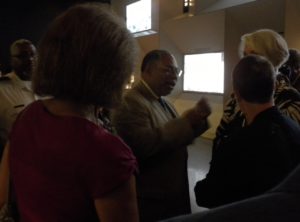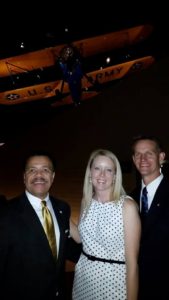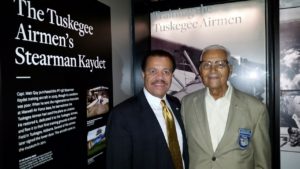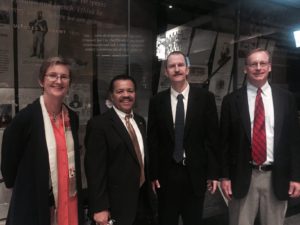September 17, 2016, Washington, DC.
I had the awesome honor in attending the Donors Evening at a pre-opening event at the National Museum of African American History and Culture, and it was absolutely and AWESOME star-studded event. No long lines to get into the building, they handled issues of crowd control with absolute precision, including checking bags, IDs and onsite registration. The first thing a visitor will notice is the beauty and grandeur of the lobby, which was warm and inviting.
The architects and planners of the National Museum of African American History and Culture’s clearly thought out issues such as transporting thousands of people throughout the building at any given time. The museum is supported by a complex escalator and elevator system that can easily move guests from one floor to the other with ease, and the elevators hold more than 50 passengers at one time.

The curators at the National Museum of African American History and Culture did an awesome job

in placing the right artifacts in each of the historic galleries. On the lower Concourse Level 2 (C2) “Defending Freedom, Defining Freedom: The Era of Segregation 1876-1968” just one of the many exhibits is the Tuskegee Airplane.
When Captain Quy purchased the plane, he had no idea of its historic significance. According to Captain Quy, once he had an Air Force archivist research its serial number, he learned that two days after the plane rolled off the assembly line in November 1944, it was delivered to Moton Field in Tuskegee, Alabama. After the war, the plane was used as a crop duster until purchased by the Quys. (Additional pictures of the aircraft below).
I had the unique honor to stand under the “protective” wings of a Tuskegee Airplane, in suspended flight with Matt and Tina Quy who donated the vintage Stearman biplane to the National Museum of African American History and Culture, after acquiring the plane without realizing its historic significance. The plane was used to train the all black pilots that served in the Army during World War II.

Of the 350 men who flew as Red Tail Pilots, the popular name for the African-American U.S. World War II pilots in the 332nd Fighter Group and the 477th Bombardment Group of the Army Forces, reportedly there are only ten still with us.
I had the honor to stand at the Tuskegee Airman’s exhibit with Red Tail Pilot, Colonel Charles McGee, as we both give a “shout out” to Lt. Colonel Leo R. Gray who was featured in the book Freedom Road: An American Family Saga From Jamestown to World War.”
Some of you may not know that I once owned one of the Boston properties originally owned by William Lloyd Garrison, the prominent 1860s American abolitionist and editor of the abolitionist newspaper The Liberator, as featured in the book Freedom Road. Last night while at the National Museum of African American History and Culture’s Donor Evening, I had the unique opportunity to swap stores with three of Garrison’s direct lineal descendants. What a true honor.
one of the Boston properties originally owned by William Lloyd Garrison, the prominent 1860s American abolitionist and editor of the abolitionist newspaper The Liberator, as featured in the book Freedom Road. Last night while at the National Museum of African American History and Culture’s Donor Evening, I had the unique opportunity to swap stores with three of Garrison’s direct lineal descendants. What a true honor.
Additional pictures of the National Museum of African American History and Culture.
.
” src=”http://ricmurphy.com/wp-content/plugins/ckeditor-for-wordpress/plugins/wpgallery/images/spacer.gif?t=F7J8″ title=”gallery link=”file” ids=”717,719,718,716,715,710,711,712,713,714,705,706,707,708,709,704,703,702,701,700,695,696,697,698,699,694,693,692,691,690″” />
.
” src=”http://ricmurphy.com/wp-content/plugins/ckeditor-for-wordpress/plugins/wpgallery/images/spacer.gif?t=F7J8″ title=”gallery columns=”2″ ids=”690,691,692,693,694,695,696,697,698,699,714,718,701,702,719,717,700,703,704,705,706,707,708,709,710,711,712,713,715,716″” />